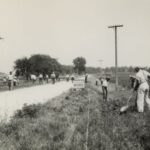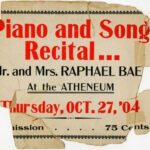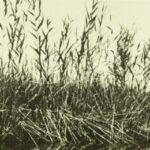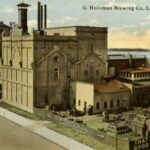In the holdings of the Greendale Historical Society is an unassuming set of tools, comprised of hand saws, planes, braces and drill bits, among other items. Though these were mass manufactured and similar tools exist all across the country, these particular tools are a piece of Greendale’s history as well as a piece of the larger American story of the New Deal and the Greenbelt community program of the 1930s. Originally, these tools were the property of Milwaukee carpenter Jack Slaske, who used them during the construction of Greendale following his 1936 recruitment by the federal Works Project Administration. For two years, every Monday morning, Jack left his home on Milwaukee’s south side in an open truck alongside other Milwaukee carpenters and craftsmen and drove 10 miles to the site of Greendale; and every Friday he returned to Milwaukee after a week of building Greendale Originals (a term used to refer to the identical houses designed by the federal government) on what had formerly been humble farmland. From 1936 to 1938, under sweltering heat or freezing snow, Milwaukee-area men like Jack labored tirelessly to build the homes, schools, and main street buildings that would provide the groundwork for one of America’s most unique “green” towns, with many of the structures that Jack and his fellow workers built in the 1930s continuing to serve the people of Greendale today. Slaske’s toolkit serves as a physical reminder of the men who built Greendale from the ground up by the sweat of their brow and the tools in their hands. Looking at the tools that built Greendale, one can imagine the people that came together to build this community.

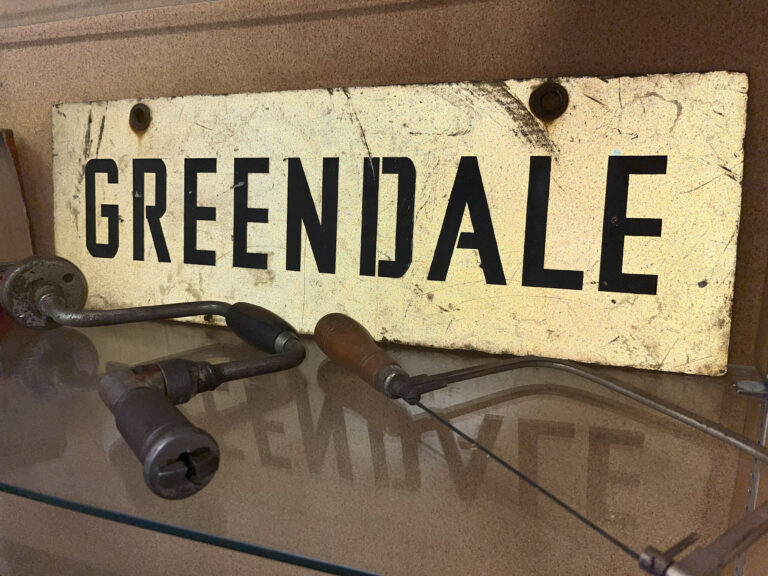
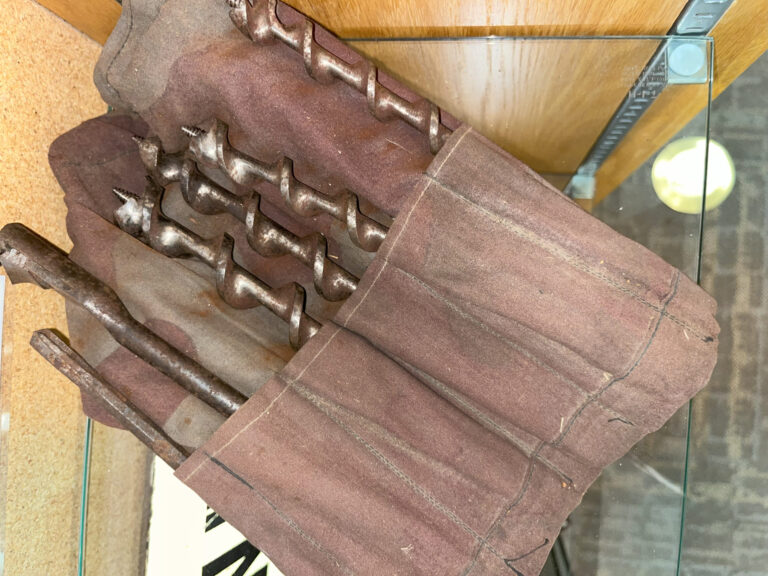
Looking more closely at the tools themselves reveals much more about Jack, Greendale, and the state of the country in the 1930s. Close examination of the hand saws shows multiple details that can provide insights about their manufacture and quality. An inscription embossed into the saw blade itself depicts the logo of Henry Disston & Sons Keystone Saw Works, a saw manufacturing company owned and operated by the Disston family out of Philadelphia, Pennsylvania. The stamp also features a quote from Henry Disston himself, stating that “For Beauty, Finish, and Utility this Saw cannot be Excelled”. Disston etchings and name stamps changed regularly throughout the company’s history, and because of this these markings can be to date the manufacture of the tool. The particular logo and quote etched on Slaske’s saw dates its manufacturing to sometime between 1917 and 1928. This dating is further supported by the physical features of the saw itself. Slaske’s saw features a closed-top handle covering the top of the blade and four saw nuts in a particular formation with a medallion in the middle of this configuration. These particular features likely identify Slaske’s as a 1928 Disston D-12 model saw, which suggests that Slaske may have purchased this saw just before the onset of the Great Depression, and that he too placed a high value on the “beauty, finish, and utility” that was a hallmark of Disston and Sons.
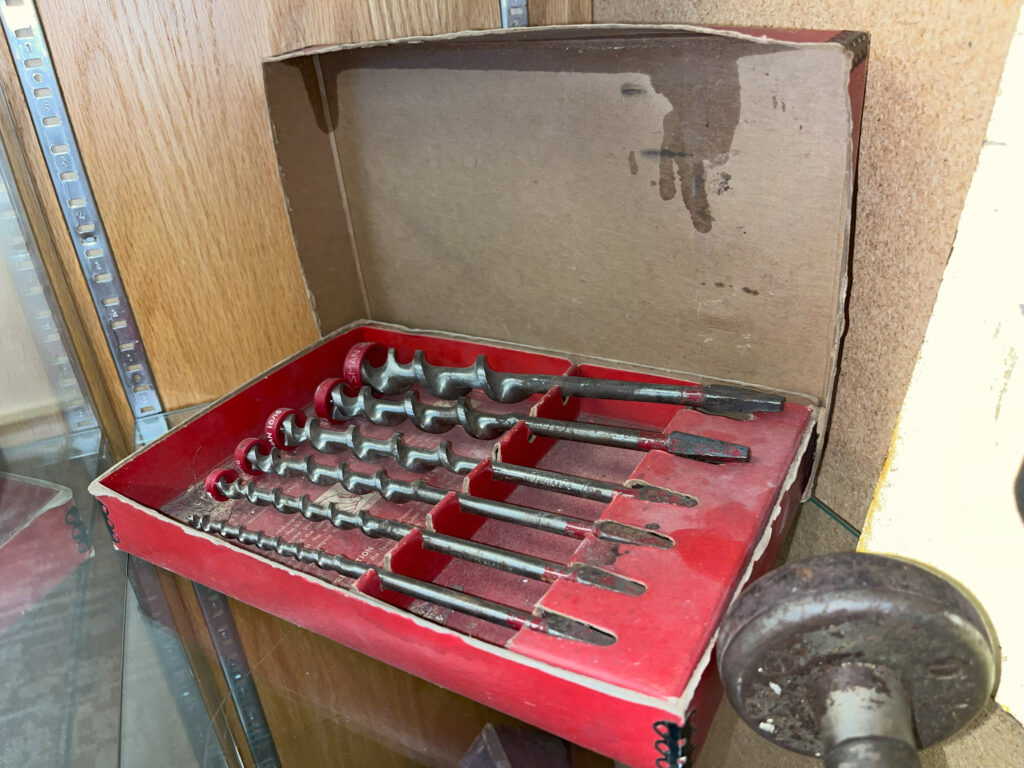
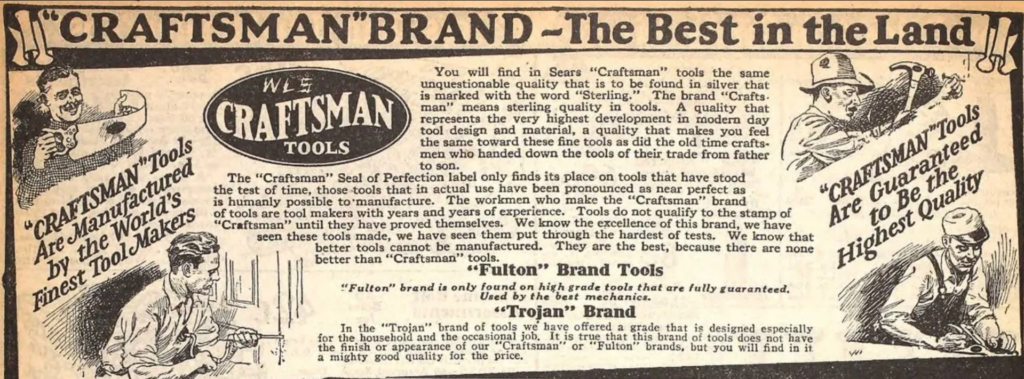
Information on the other tools provides similar insights. The twist drill bits in the red box are likely a Craftsman Auger Bit Set, No. 9-4156. Craftsman was a tool line originally established exclusively for Sears, Roebuck and Co. in 1927, which, at this time, was offering its products both through mail-order catalogs and establishing some of its first retail stores outside of Chicago. The company opened its first Milwaukee store on September 10th, 1927, the same year it established its Craftsman tool brand, making it likely that Slaske bought these drill bits sometime around 1927 either by mail or at the company’s Milwaukee location. A Craftsman advertisement from this time states that the tools “are manufactured by the world’s finest tool makers”, speaking again to an emphasis on quality.
Jack Slaske had been working as a carpenter in the Milwaukee area before the onset of the Great Depression, so it’s probable that the tools he used to build Greendale were his own. One can imagine Slaske in the back of a truck riding down from Milwaukee with his fellow craftsmen, holding his prized toolbox—the tools of his livelihood—under his arm. These tools and the community that they built were a source of pride for Slaske and his family, and for good reason. Greendale as a community was built by true masters of their craft, using quality tools, careful attention to detail, and the kind of craftsmanship that can only come from masterful expertise and hands-on work. Many of Greendale’s original buildings are still standing and being used today, speaking to their incredible quality and durability. The construction of Greendale as a New Deal “Greenbelt” town is just one of the many things that make its story so unique to both Wisconsin and United States history, and Jack Slaske’s tool set serves as a poignant representation of the people who worked to build it.
Written by Evie Sellers, August 2024.
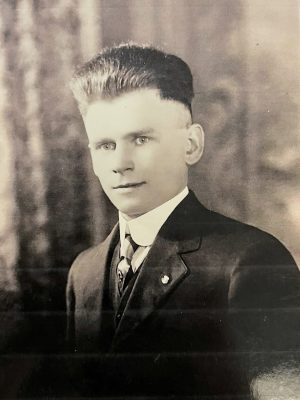
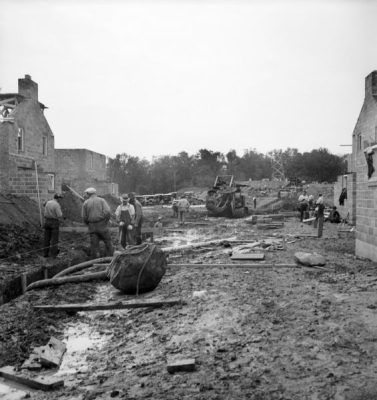

Sources
Arnold R. Alanen and Joseph A. Eden. Main Street Ready-Made: The New Deal Community of Greendale, Wisconsin. (Madison: Wisconsin Historical Society Press, 2012).
“Craftsman: The Standard of Quality.” 2012. Sears Archives. http://www.searsarchives.com/brands/craftsman.htm.
Chris Foran, “A look at Milwaukee’s first Sears store, which developer plans to turn into offices, brewery, more.” Milwaukee Journal Sentinel. 20 August 2019. https://www.jsonline.com/story/life/green-sheet/2019/08/20/look-back-milwaukees-first-sears-store-and-what-happened-after-ikon-hotel-boutique/2055578001/.
Erik Von Sneidern, “The Medallions and Timeline of Saw Manufacture,” The Disstonian Institute: Online Reference of Disston Saws (website). Accessed March 2024. http://www.disstonianinstitute.com/medv2.html.
Erik Von Sneidern, “Disston No. 12, 112, D-12 and D-112 Handsaws,” The Disstonian Institute: Online Reference of Disston Saws (website). Accessed March 2024. http://www.disstonianinstitute.com/12page.html

Greendale Historical Society
This object is part of the Greendale Historical Society Collection. Research for this object essay and its related stories was supported by the Greendale Historical Society in Greendale, Wisconsin.

